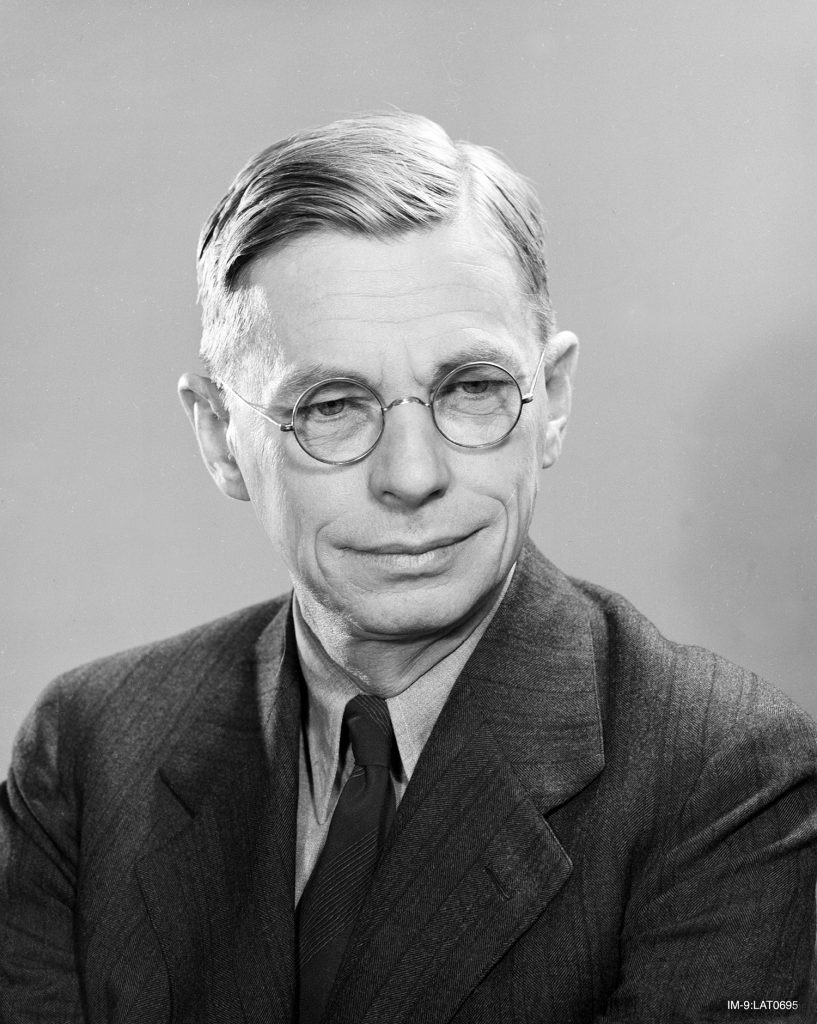James Bryant Conant (1893-1978) was an American chemist and government official.
Early Years
Conant was born in Dorchester, Massachusetts, and attended the Roxbury Latin School. He received his B.S. from Harvard University in only three years, and went on to earn a Ph.D. in chemistry, also from Harvard.
During World War I, Conant served in the U.S. Army developing poisonous gases (for more information, see historian Alex Wellerstein’s article, “Conant’s War: Inside the Mouse-Trap”).
After the war, Conant returned to Harvard to teach chemistry, where he would also research chlorophyll and hemoglobin. Additionally, Conant visited Germany in 1925, touring the major universities and laboratories and meeting with leading German chemists. In 1933, Conant was named the 23rd president of Harvard, a position he would hold for 20 years.
Manhattan Project Involvement
In the years leading up to World War II, Conant played a major role in pushing the U.S. government to develop an atomic bomb. He was appointed by President Roosevelt as an early scientific liaison with the United Kingdom, and also served as a chemistry advisor to the National Defense Research Committee (NDRC). Conant would become chairman of the NDRC after it was reorganized under the Organization for Scientific Research and Development (OSRD).
As the Manhattan Project neared completion, Conant was appointed as a member of the Interim Committee to make recommendations on the wartime use of the atomic bomb. Originally uncomfortable with the idea that he would be representing the scientific community, Conant encouraged the creation of the Committee’s Scientific Panel, made up of Manhattan Project leaders Arthur Compton, Ernest Lawrence, J. Robert Oppenheimer, and Enrico Fermi.
Although Conant later affirmed that use of the bomb was “correct,” he was also one of the first advocates of nuclear control. In a speech shortly after the end of the war, Conant asserted, “One thing has been as clear as daylight to me ever since I first became convinced of the reality of the atomic bomb: namely, that a secret armament race in respect to this weapon must at all costs be avoided.” Conant would briefly serve as a member of the General Advisory Committee to the newly created Atomic Energy Commission.
Conant later received the Presidential Medal of Freedom from John F. Kennedy. He also went on to receive the Atomic Pioneers Award (along with Vannevar Bush and General Leslie Groves) “For his exceptional contributions to the national security as Chairman of the National Defense Research Committee in overseeing the successful development of weapons systems, including the atomic bomb, during World War II and for his pioneering leadership in the Nation’s atomic energy program after the war as Chairman of the Committee on Atomic Energy of the Joint Research and Development Board and as a member of the General Advisory Committee to the Atomic Energy Commission.”
Later Years
After leaving his post at Harvard in 1953, Conant was named President Emeritus. He went on to serve as U.S. High Commissioner and then Ambassador to West Germany from 1953-1957.
Conant died on February 11, 1978 in Hanover, New Hampshire.





